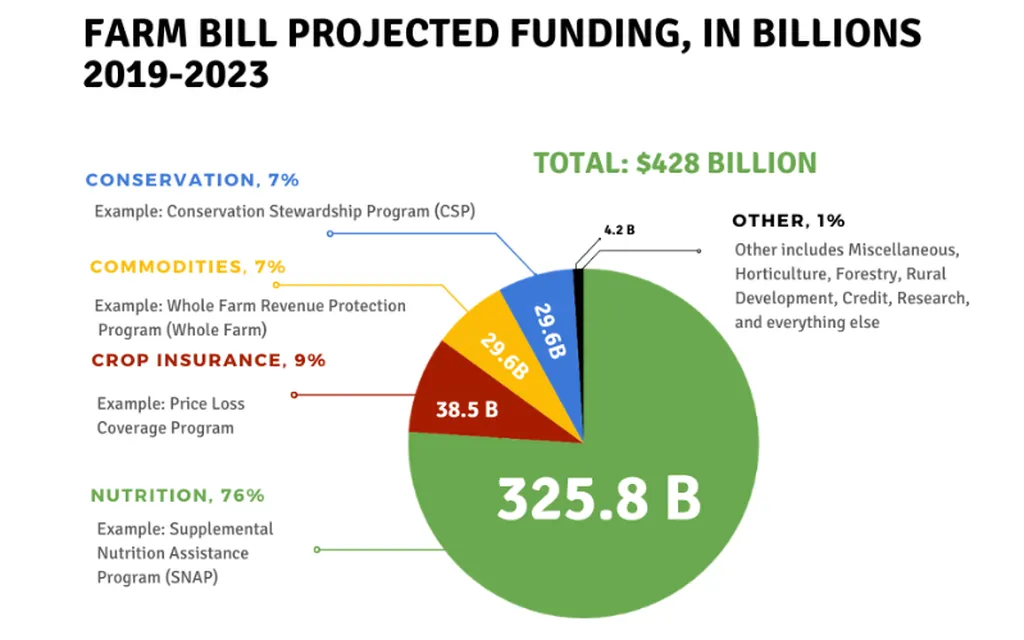The agricultural landscape in the United States is undergoing significant transformations, driven by policy, technology, and shifts in land ownership. At the heart of these changes are the U.S. farm bills, which wield considerable influence over more than $400 billion in agricultural funding. These legislative packages, renewed every five years, shape trends in technology and sustainability, steering the future of farming in America.
The most recent farm bill, passed in 2023, introduced a wave of reforms aimed at addressing the evolving needs of the agricultural sector. These reforms include support for sustainable practices, climate resilience programs, crop diversification, conservation efforts, and technological research. The impact of these policies is profound, influencing market conditions, encouraging farmers to adopt new practices, and driving advances in agricultural technology.
As of 2025, the agricultural sector is actively leveraging these farm bills to transition towards regenerative agriculture, enhance climate resilience, promote conservation stewardship, and fund technology and research. For instance, farm bills incentivize practices that improve soil health, sequester carbon, and restore biodiversity—essential factors for long-term food security. Subsidies for drip irrigation, cover cropping, and reduced tillage allow farmers to increase productivity and adaptability in a changing climate. Moreover, greater emphasis is placed on land stewardship, with robust frameworks to preserve wetlands, grasslands, and wildlife habitats alongside working farmland.
The influence of farm bills extends beyond policy, shaping the future of agricultural practices, innovation, and sustainability. By 2026, we anticipate further market shifts as farm bills integrate near-real-time environmental monitoring technologies into eligibility for subsidies and funding. Blockchain and satellite data will streamline reporting, proving compliance and providing transparency for consumers demanding sustainable products.
Meanwhile, the accumulation of farmland by major investors has sparked both fascination and debate. Bill Gates, for instance, now owns over 275,000 acres of farmland across multiple states, making him the largest private farmland owner in America as of 2025. Gates’s holdings span rich croplands, pasture, organic conversions, and research fields, serving as testbeds for advanced farming techniques, including precision irrigation, drone-based monitoring, and machinery like the Hills Sprayer.
The presence of large-scale, tech-driven actors like Gates is shifting how policy, research, and local markets align with global food security challenges. However, this trend raises critical questions about the impact of consolidated ownership on innovation, local producer diversity, and sustainability. As the farm landscape continues to evolve, ongoing discussions around ownership, stewardship, and innovation reshape what it means to be a farmer in 2025.
Technological innovations, such as the Hills Sprayer, embody the agricultural transformation. This precision sprayer utilizes GPS mapping, smart sensors, and variable-rate controls to transform field management. It enables targeted application of fertilizers and pesticides, reducing waste and environmental impact, improving yields and efficiency, and integrating with farm management software and satellite-based monitoring.
The adoption of advanced equipment like the Hills Sprayer offers numerous benefits, including boosted efficiency, data-driven insights, and support for sustainable practices. These technologies are now essential tools for sustainable, large-scale, and local farming operations, aligning with the goals of farm bills and reflecting a nationwide move towards more sustainable and efficient farming.
Amidst these transformations, local agricultural economies like those seen at the North Hills Farmers Market and Smithills Farm Milk remain essential pillars of U.S. and global food systems. These markets connect regional producers with consumers seeking fresh, authentic, and sustainable products, playing a key role in maintaining the diversity of local farms and preserving the community fabric.
In conclusion, the agricultural landscape is shaped by a complex interplay of policy, technology, and land ownership. As we move into 2025 and beyond, these factors will continue to drive the evolution of farming, influencing how farmers manage farmland, adopt new practices, and ensure sustainability in a world of changing climates and market dynamics.

